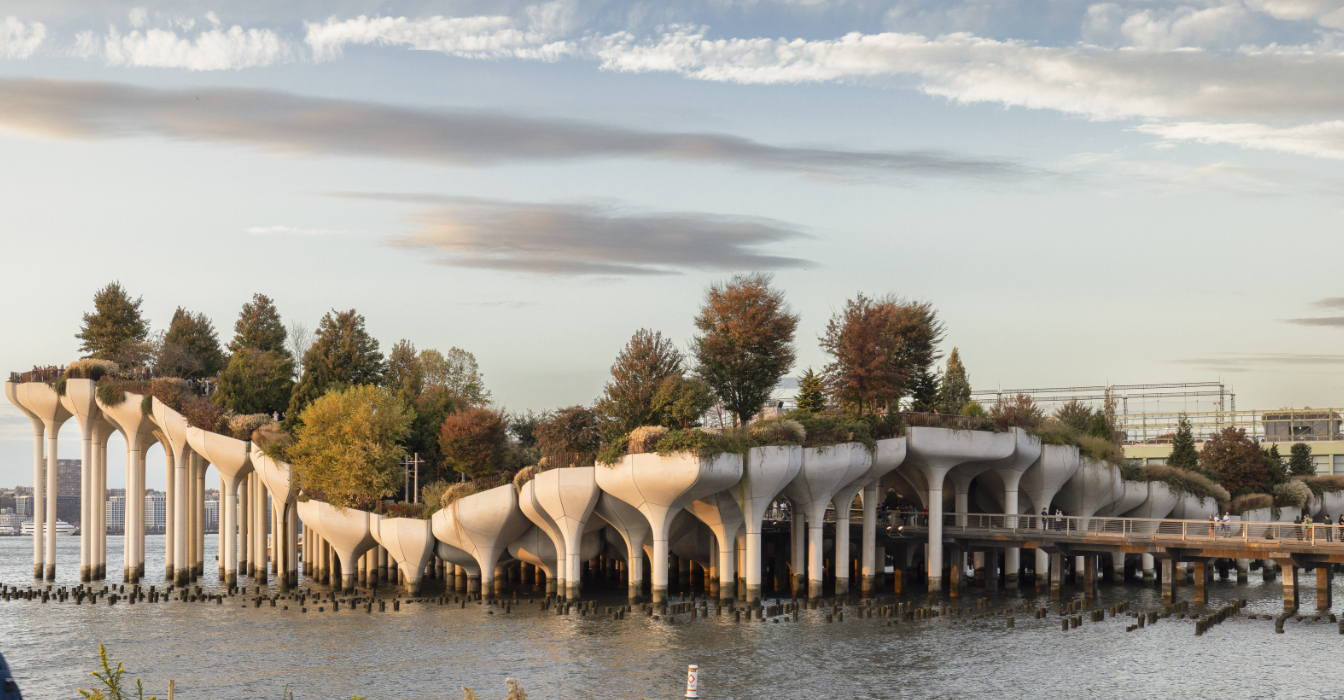What do you do when Manhattan runs out of much needed land for a public park? You build Little Island in the Hudson River.
That’s what The Diller-von Furstenberg Family Foundation did, with the help of the Wachtell Lipton law firm.
Wachtell Lipton represented the Foundation and non-profit Pier55 Inc on a pro bono basis in an extraordinary project for the benefit of New York City – the $260M re-imagination and redevelopment of a pier in Hudson River Park, which had been heavily damaged by Hurricane Sandy in 2012, converting it into a spectacular new public park. Wachtell Lipton’s team began working on the project at its inception in 2012, and over the last 12 years negotiated a series of complex public-private agreements culminating in a unique long-term lease with Hudson River Park Trust that serves as a model for revitalizing public parks. In addition to negotiating the complex arrangements and advising on strategy, the firm successfully litigated a variety of claims that sought to block the project, and addressed public policy, regulatory and environmental concerns.
The redeveloped pier opened in May 2021 and is a one-of-a-kind 2.4-acre public park in the Hudson River off the west side of Manhattan. It provides much-needed new green space, with a distinctive architectural and landscape design, and a diverse mix of performing arts and educational programming. Little Island has quickly become an essential part of New York City, first and foremost as a park, but also as a unique venue for innovative outdoor music, theater, opera and dance. Over 1.4 million visitors have enjoyed Little Island so far in 2024, and over 5 million since its opening. Wachtell Lipton continues to support the operations of Little Island on a pro bono basis.
Wachtell Lipton partner Robin Panovka, who led the matter, noted that “our work on this project is part of the firm’s long tradition of pro bono representations to benefit the City of New York, starting with Marty Lipton helping the City avoid bankruptcy in the 1975 financial crisis.” The firm also spearheaded the rebuilding of the World Trade Center after the terrorist attacks of September 11, 2001. According to Panovka, “the World Trade Center project, like Little Island, involved public-private collaboration, which is often an essential element of the kinds of large scale, city-building projects we work on.” The firm’s expertise in large scale developments supplements its leading REIT and real estate M&A practices.
The project is ground-breaking from a legal perspective, but is also an architectural and engineering marvel. Panovka shared with Lawdragon a number of fun facts about the project:

- Little Island boasts an innovative design using 132 free-standing independent concrete “tulip” piles that had to fit together as parts of a puzzle.
- The design is meant to evoke a leaf floating on the water.
- While the shape of Little Island is different from the two “pencil piers” it replaced, the surface area, 2.4 acres, is the same.
- Each pot weighs up to 75 tons.
- The tallest “tulip pot” is 62 feet above the water.
- The shapes and angling of each pot at the top of the piles is unique, each a differently shaped piece in the puzzle of the overall design.
- Each pile has its own GPS coordinates used to place it with laser-guided precision in order for all the pieces of the puzzle to fit.
- The landscape includes 468 species of trees, shrubs, perennials and grasses.
- The complex arrangement between the Little Island non-profit and the governing body of the Hudson River Park is used as a role model for public-private partnerships (PPPs) to revitalize and reimagine public parks.
- Little Island has welcomed over 1.4 million visitors for 2024 so far and over 5.5 million since they opened.
- Survivors of the Titanic disembarked at the pier after the ship went down in 1912, and the Lusitania left from the pier on its last voyage before being torpedoed by the Germans during World War I.
- The park design was built with the future in mind, accounting for a potential 65-inch sea level rise by the year 2100, based on the 90th percentile estimate. The design also factored in a 100-year storm and additional freeboard for wave action, which led to elevating the park by 10 to 16 feet, with the lowest points being at the Playground and bridge entrances.
- The vision for Little Island was driven by the Diller-von Furstenberg Family Foundation with a contribution of $260M and the commitment for an additional $120M for the future. An additional $17M was contributed by the City for the Esplanade and the State contributed $4M.
Says Panovka, “This project played to our strengths in that it required creativity, team-work and intense effort by a whole group of lawyers from our real estate, corporate and litigation practices. And the rewards keep coming every time we go to Little Island and see so many people smiling and enjoying the park.”
The team at Wachtell Lipton also included litigator Marc Wolinsky and real estate lawyers Mark Koenig, Richard Ross, Dianna Chen and Andrea Riina.


